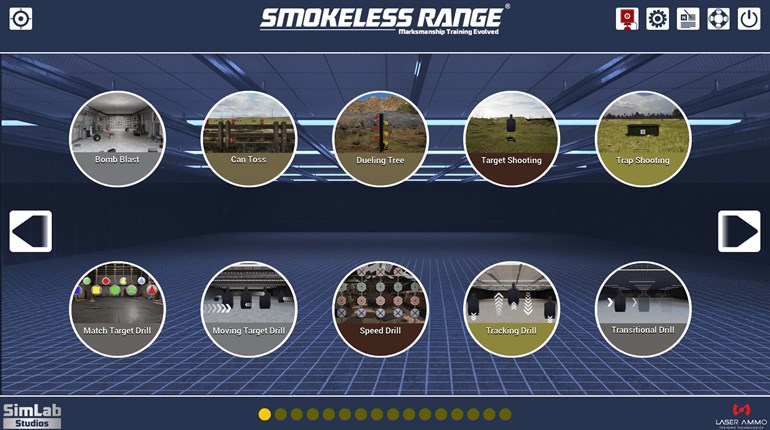
When asked, most champion shooters will say that dry-fire practice is an integral part of winning. Add Vince Lombardi’s classic quote, “Practice does not make perfect, only perfect practice makes perfect,” to this, and you’ll quickly understand the value of devices such as the Laser Ammo SureStrike and LaserPETII, which provide audible and visual feedback, letting you know if your efforts resulted in a hit or if you need to make some changes in your approach.

Up until this point, Laser Ammo focused mostly on shooters who were looking to perfect practical maneuvers, such as drawing and target transitions, leaving the bolt gunners with their tongues out. After legions of precision rifle shooters voiced their concerns, the company responded with the new 6.5 mm Creedmoor SureStrike adapter (MSRP: $39.95).
Sports such as PRS (Precision Rifle Series) rely heavily on understanding your rifle’s DOPE and reading atmospheric conditions prior to pressing the trigger. But, none of that matters if you haven’t built a stable firing position. When precision rifle shooters dry fire, this is what they are focusing on, and now they have a tool to let them know whether or not they struck the target.
Before talking about the 6.5 mm Creedmoor adapter, let’s examine the Laser Ammo SureStrike cartridge and LaserPETII. Essentially, the SureStrike is a laser-firing cartridge that is placed in the chamber of your gun. When the firing pin strikes the rear, it projects a red or infrared laser (depending on model), which can also be read by a several target systems also available from the company. The cartridge is built without a rim, so it does not eject when you cycle the action (a cleaning rod is used to get it out).

The SureStrike starts life as a 9 mm Luger cartridge and through a variety of adapters, can fit a myriad of popular chambers. If you already own Laser Ammo gear, upgrading to 6.5 mm Creedmoor is only $39.95. The LaserPETII is a companion target that reads the projected pulse and plenty of start and scoring modes. When used together, dry-fire drills can replicate match scenarios with shooters receiving feedback on their performances.
I tested the equipment using a Savage 110 Elite Precision 6.5 mm Creedmoor rifle, which has seen a lot of use this year. The SureStrike cartridge dropped in as advertised, and all but aligned itself with my crosshairs at 12½ yards. There was enough adjustment in my Riton X7 Conquer optic to center it up.
Next, I started a few drills using the ½-inch target insert. At 12½ yards, the target size was 4 MOA. A bit large, but this is the smallest insert provided. I began testing in the first programming mode of the LaserPETII—which is a simple shot counter—to get a solid feel for the unit’s registry. With everything working as advertised, I recognized the potential here for a productive ladder drill.
Using a ladder forces you to learn how to balance your rifle, as well as how to get behind it at a variety of different heights. This drill is popular because it is effortless to set up—simply open a ladder and, in this case, you don’t even need to take it out of your house.

By using the same program, I challenged myself by firing a shot from each rung, only moving after a hit was scored. Later, I added a “Know Your Limits” feel to the course of fire, by forcing myself to go back to the first rung if I missed as a lower, harder rung. I scored this drill as successful only when I got all the way down to prone and landed a shot. Throughout the drill, I deployed an Armageddon Gear Game Changer bag. This was my first time using the company’s products, and I instantly understood why they have grown to be so popular—here, the bag transformed a ladder step into a shooting bench. As time went by, I could deploy the bag ever faster, which is another unsung benefit to dry-fire practice.
Hearing the beep of the LaserPETII after a well-executed hit became a welcome sound to my ears. Perfecting shooting positions with the same rifle I use in a match is a big advantage, as each gun has a unique balance point, bolt throw and footprint. Overall, I found this device to be especially useful for improving trigger presses, set-up times and shooting positions. However, I would have preferred a smaller, ¼-inch target insert, as 4 MOA is a little large for practice.
Of course, you can take everything outside and stretch it out to 25 yards, but I was drawn to being able to use this system in my house, particularly during harsh weather. A simple workaround is adding black electric tape to close up the hole, or even making your own insert out of cardstock with a pair of scissors and a hole puncher. That’s not so bad, especially when comparing the price of cardstock to primers.
Learn more at laser-ammo.com.
Read more: Why Dry Fire?


































